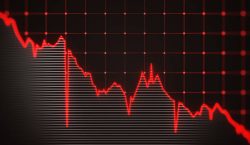

The South African Reserve Bank (SARB) has warned that the upward drift of government debt is set to accelerate.
While South Africa’s gross government debt-to-GDP ratio was roughly equal to the emerging market economies’ average in 2019, the domestic debt trajectory is a risk, the SARB said in a Financial Stability Review, published on Wednesday (27 May).
South Africa’s public debt increased by more than almost any of its peers between 2008 and 2019 – by 33 percentage points of GDP.
In the 2020 National Budget, National Treasury (NT) projected a further increase in the debt stock, from the current level of 61.6% of GDP, to 71.6% of GDP in 2023.
“However, the debt stock is likely to rise much faster in light of the economic impact of Covid-19, as well as the fiscal stimulus measures announced by NT in April 2020. IMF projections indicate that the gross government debt-to-GDP ratio will reach 85.6% of GDP by the end of 2021,” it said.
Change in gross government debt for various emerging market economies 2008–2019

The debt service cost of government continues to increase, the SARB said. Debt service costs account for 13% of government expenditure and 16.4% of revenue in the 2020/21 budget. This is up from less than 8% of government expenditure in 2009/10.
It said that National Treasury projects that the debt service burden will rise to 15% of expenditure by 2023 as interest payments are the fastest-growing item in the budget.
“As pressure on the fiscus increases, the rising interest bill is likely to crowd out other social and investment spending priorities. This, in turn, may adversely impact on longer-term economic growth prospects, as improvements in the provision of health care, education and infrastructure provide the basis for future GDP growth,” the Reserve Bank warned.
“Once Covid-19 has been contained, a growth-friendly fiscal consolidation will be necessary to address the rise in public debt. Should government debt continue to increase unabated, government may face debt service challenges, which could have serious implications for financial stability,” it said.
Budget deficits have increased, reflecting substantial funding requirements, the Reserve Bank said. The budget deficit for the 2019/20 fiscal year was the largest in over two decades, reaching 6.5% of GDP.
It said that National Treasury forecasts the deficit to widen further, to 6.8% of GDP, in the current fiscal year. “In light of the macroeconomic shock caused by Covid-19, the budget deficit will likely exceed 10% of GDP this year, which would make it one of the largest in South Africa’s history.
Government budget balance and debt service costs
Substantial deficits in previous years were the result of increased financial support for state-owned enterprises (SOEs) as well as weaker-than-expected tax revenue growth, it continued/.
Given the challenging macroeconomic backdrop, SOEs are likely to continue facing financial difficulties and may require further government support, it said.
Some good news
First, most of government’s debt is denominated in the rand. Only about 10% of public debt is foreign currency-denominated, which is a significant strength. This is because debts issued in foreign currency increase vulnerability to exchange rate depreciations, which in turn increase the local-currency value of such debt.
Therefore, government’s funding strategy has largely insulated it from exchange rate risk, the SARB said.
Second, the long maturity profile of government debt provides a buffer against rollover risk. The average term to maturity of government’s debt stock was 13 years at the end of the 2019/20 fiscal year.
“However, this is projected to decline up to 11.8 years in the 2020/21 fiscal year, as reliance on short-term funding is projected to increase,” it said.
Five lost years
Bloomberg reported that South Africa stands to lose five years of potential economic output due to the shock from the coronavirus pandemic and measures to curb its spread, citing the central bank.
South Africa fell into a recession even before the first case of the coronavirus was detected in the country. Economic growth-projections deteriorated after the government imposed one of the strictest lockdowns in the world on March 27 that shuttered most business activity, it said.
The SARB expects a GDP contraction of 7% in 2020, the first full-year growth decline since 2009. This represents a substantial shock to the economy, as the worst full-year GDP growth performance in South Africa’s post-World War II history was -2.1% in 1992, it said.
While growth is forecast to recover to 3.8% next year and 2.9% in 2022, GDP will still be smaller than the levels recorded in 2018 and 2019, Alex Smith, the Pretoria-based Reserve Bank’s lead economist for the financial stability department, said in a presentation on Wednesday.
“Hence, the Covid shock could result in nearly half a decade of lost output.”
This means the nation’s households and businesses will come under strain, with asset growth and profitability in the finance sector likely to be threatened, he said.
While local banks offer smaller businesses government-backed loan relief and the nation prepares to further relax some lockdown restrictions from next month, many companies have already reported job cuts, Bloomberg reported.
It said that while South Africa banks are on average more resilient than their global counterparts, most are likely to report losses in the next year or two, Kuben Naidoo, Reserve Bank deputy governor and also head of the Prudential Authority, which regulates lenders, said on the same call.
“Our financial system is particularly well capitalised and the buffers are sufficiently large,” he said. “But let me also say South African banks are not immune to making losses, they are not immune to collapsing.” – businesstech.co.za